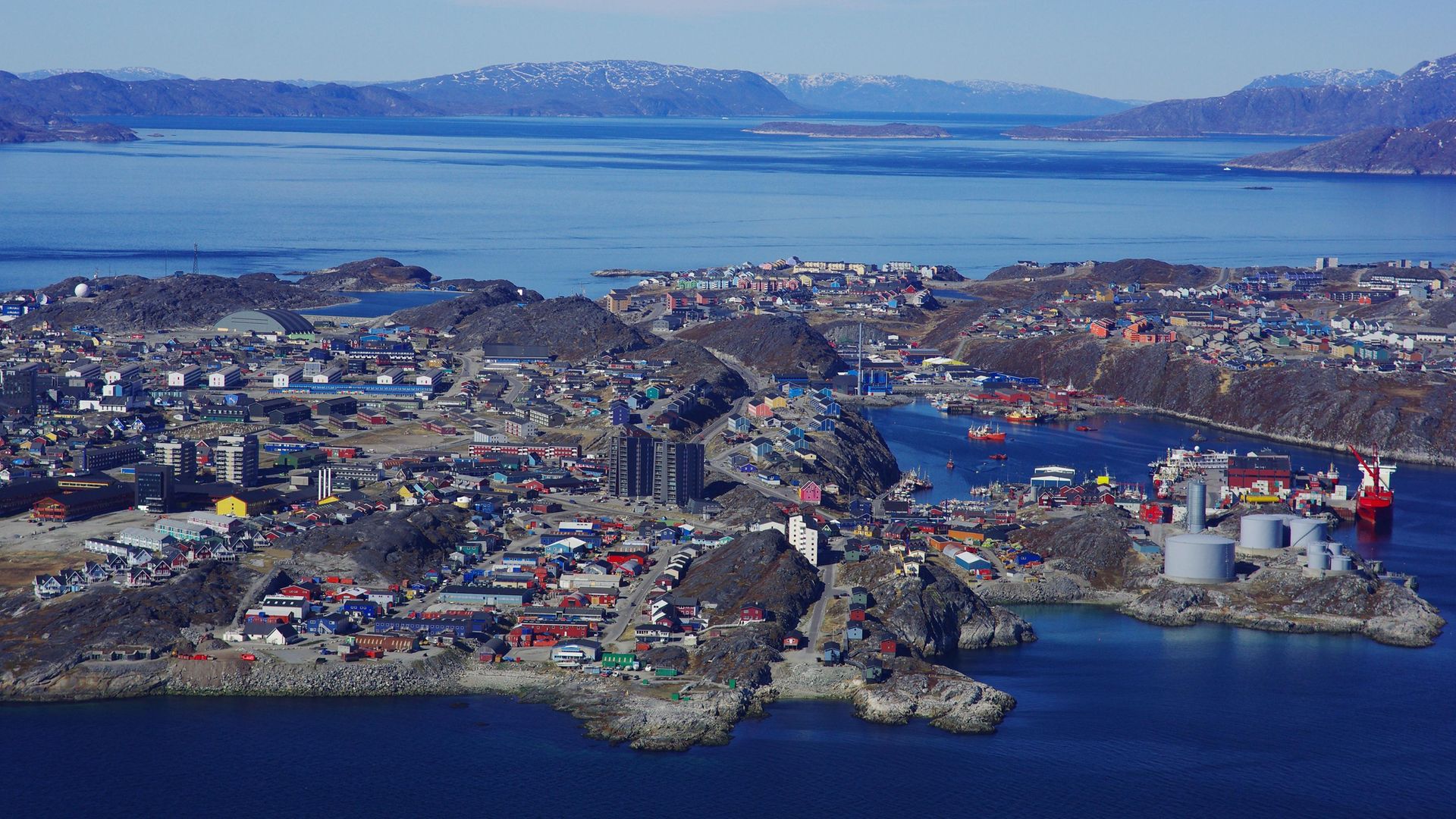
PETER TRUDGILL on the European language that lingered on Greenland, and another – of sorts – that still thrives there
Greenland is the largest island in the world. As is well known it also lies very far to the north. At its northernmost point, it is only about 500 miles from the North Pole. Iceland lies about 200 miles to its southeast; and Canada’s Ellesmere Island is only 16 miles away at its nearest. The capital, called Nuuk in Greenlandic and Godthåb, ‘Good Hope’, in Danish, has about 18,000 inhabitants.
The Greenlandic or Kalaallisut language is a variety of Inuit, with about 60,000 speakers, and it was made the official language of Greenland in 2009. It belongs to the broader Eskimo-Aleut or Eskaleut language family, which is spoken over a vast area ranging for around 4,000 miles from eastern Siberia across Alaska and Arctic Canada to both coasts of Greenland.
Aleut is a single language which is spoken on the Aleutian islands, the 1,200-mile-long arc of islands which curves across the Northern Pacific from southwestern Alaska to the Kamchatka Peninsula of Russia. Eskimo consists of two major non-mutually intelligible groups of languages, Yupik and Inuit.
Yupik dialects are spoken in eastern Siberia and western Alaska. Inuit is spoken across northern Alaska, Arctic Canada and Greenland, and consists a chain of dialects, with neighbouring dialects being readily mutually intelligible, but with comprehensibility diminishing as geographical distance increases.
Greenland was originally a Norwegian possession, but the Danish and Norwegian crowns were merged in 1523, and when they were separated again in 1814, Greenland remained under Danish control. Greenland is now part of the Kingdom of Denmark – schoolchildren in Greenland also learn Danish and English at school – and Greenlanders are citizens of the European Union. So we can say that the Greenlandic language Kalaallisut is a language of Europe, even if it is not related to any other European language as such.
But from about 900 AD to the late 1400s, Greenland was home to 3,000 or so speakers of a language which truly was European, Old Norse. They had originally arrived as Vikings from Norway via Iceland. More than 50 Old West Norse inscriptions have been found in Greenland.
Some time during their 500 years occupation of this largest island, parties of Vikings also sailed further west from Greenland to explore the place they called Vinland ‘Vineland’ – the eastern shores of Canada – as we know from the Icelandic sagas. Remains of a Viking site have been found on the northern tip of Newfoundland, about 600 miles southwest of Greenland.
The Greenland Norse community disappeared during the 1400s, for reasons which are not entirely understood but which might be connected, at least in part, to contact with the incoming Inuit, who had began to cross over the Nares Strait from Ellesmere Island, starting perhaps around 1100.
Inuit culture and technology were probably better adapted to the climate and environment of Greenland than the European Vikings’ culture and technology.
But it is also undoubtedly true that, as the Little Ice Age approached, the worsening climate not only rendered agricultural activities more difficult for the Norse settlers but also made maritime pursuits more risky, because of increasing amounts of sea-ice.
Norsemen would have found hunting migratory seals and walrus on the high seas increasingly difficult, while the Inuit, who hunted seals in the fjords and usually did not set out on hunts on the open sea, would not have been hampered in the same way.
There is also an intriguing theory that the Norse Greenlandic economy may have been ruined by elephants. Norse Greenlanders depended heavily on trading walrus-tusk ivory with Europe, but it is argued that increasing imports of African ivory into Europe undermined this crucial trade.
There is evidence that some of the settlers starved, and that others were killed – it is not clear who by. But it is very probable also that many of them simply moved back to the milder climate of Iceland.
Walrus
No one is entirely sure about the origins of walrus, but German Walross and Danish hvalross indicate that the term relates in some – admittedly zoologically improbable – way to ‘whale’ (German Wal, Danish hval) and ‘horse’ (German Ross, earlier hros). Earlier forms, like German Rosswal, used the reverse order of elements – ‘horsewhale’ rather than ‘whalehorse’.
Warning: Illegal string offset 'link_id' in /mnt/storage/stage/www/wp-includes/bookmark.php on line 357
Notice: Trying to get property 'link_id' of non-object in /mnt/storage/stage/www/wp-includes/bookmark.php on line 37







